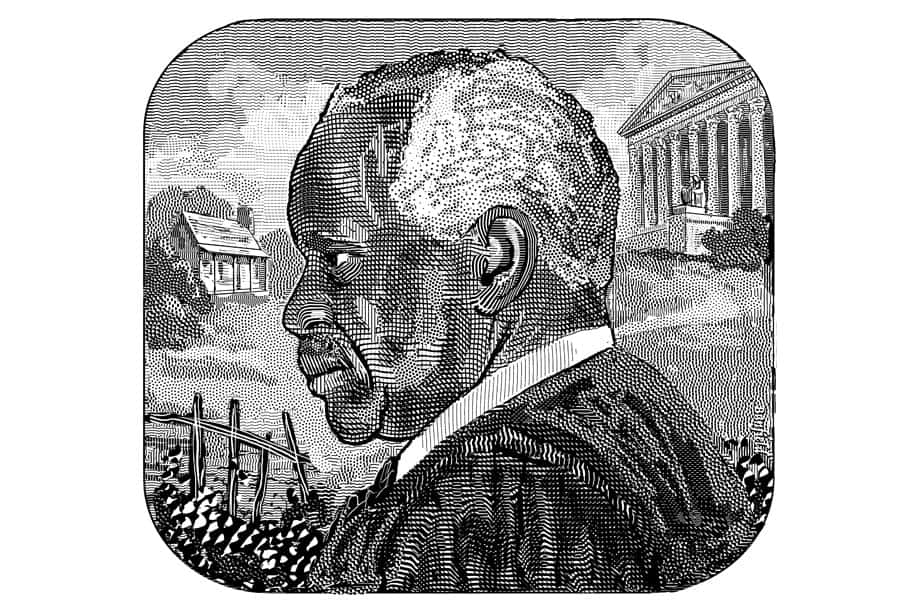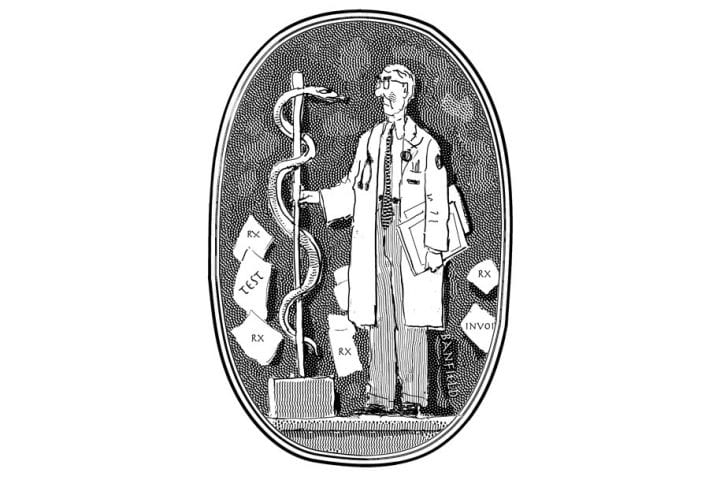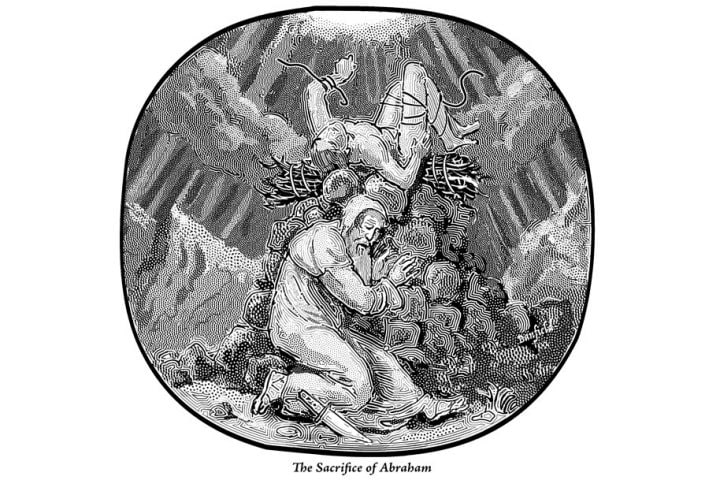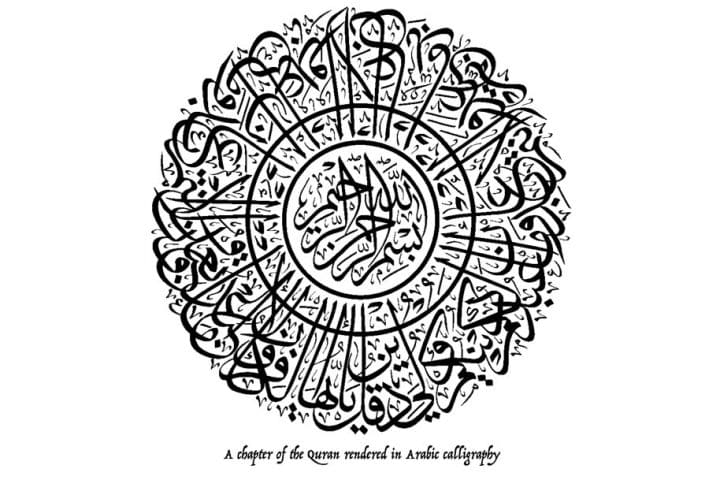Books Reviewed
Clarence Thomas joined the Supreme Court 28 years ago, before all eight of his present colleagues. He has sat on the Court for a longer period than all but 19 of the 114 Americans who have ever served there. Now 71, Thomas will eclipse William Douglas’s tenure as the longest in Court history if he remains a justice for another eight years. Over the course of these 28 years, Thomas has been the subject of numerous books, some thoughtful, most vindictive. The two most recent—The Enigma of Clarence Thomas by Corey Robin, and Clarence Thomas and the Lost Constitution by Myron Magnet—take their subject seriously but arrive at dramatically different conclusions.
Corey Robin, a political science professor at the Graduate Center of the City University of New York, is a democratic socialist who writes for Jacobin. Myron Magnet, former editor of the Manhattan Institute’s City Journal, is author of The Founders at Home (2013). Magnet portrays Thomas as a jurist of conservative principles, who explicates republican government’s genius and necessity in Court opinions that Robin dismisses as “right-wing boilerplate.”
Both books attribute some role in Thomas’s intellectual development to two political scientists, John Marini of the University of Nevada and me. We were special assistants (in my case, from 1986 to 1990) to Thomas when he was chairman of the Equal Employment Opportunity Commission. In his autobiography, My Grandfather’s Son (2007), which, alongside the new documentary Created Equal, remains the best source for understanding his life prior to the Court, Thomas relates:
Instead of rehashing the usual partisan debates over quotas and civil rights, I could now [in his second term as chairman] turn my attention to more substantive questions. Among other things, I led my staffers (especially Ken Masugi and John Marini) in discussions of the natural-law philosophy with which the Declaration of Independence, America’s first founding document, is permeated…. We debated at length the implications of natural-law thinking, and speculated on how it might apply to contemporary political discussions. These arguments stimulated my mind in a way that no discussion of current events could possibly hope to equal.
During his book tour, Thomas noted that rather than speechwriters, he hired political theorists. With this stimulation, he “found time to write op-ed pieces, book reviews, and longer articles. This, too, helped me to break free from the mind-numbing effects of the daily grind of running a government agency. I felt my intellect was reawakening after years of hibernation.”
At Thomas’s urging, I wrote him brief memos about issues of the day—political, legal, and moral—and how they reflected deeper, abiding questions of political philosophy. When I gave him an essay by John Marini on the administrative state (this was in 1987), he scrawled on top of it, “i must see marini!” He soon hired Professor Marini, who has since added Unmasking the Administrative State (2019) to two previous books on the subject. As with the administrative state, many of Thomas’s ideas from his earlier years—such as the focus on the founders’ understanding of the Constitution, revival of the Privileges and Immunities Clause, and above all his interest in “the natural-law philosophy” of the Declaration of Independence—abide in his Court opinions decades later. Those ideas are in turn rooted in his earliest days in Savannah.
* * *
Robin’s unconventional assessment of Thomas eschews the approach taken by such left-wing hacks as Jane Mayer and Jill Abramson. Prior to Donald Trump’s election, the Left recognized Thomas as its worst enemy, slurring him as a sexual harasser, self-hating black, and nothing more than a second vote for Antonin Scalia. Robin’s Thomas, by contrast, “has long been committed to a conservatism that speaks to and for African Americans,” and his dissents and concurrences over the years have caused other justices to change how they think and vote. Moreover, the expanding ranks of his former clerks are increasingly influential in shaping law and governance.
The enigma Robin unmasks, the “secret hiding in plain sight,” is that Thomas is “a black nationalist whose conservative jurisprudence rotates around an axis of black interests and concerns.” Robin contends, “Race is the foundational principle of Thomas’s philosophy and jurisprudence.” Thomas has long acknowledged his youthful attraction to Black Power and his membership in the Black Panthers, but treating this as the key to his jurisprudence is ludicrous. It is one of many bizarre assertions. Claiming, for example, that “Thomas’s mind is less juristic than it is political,” Robin compares him to the anti-Catholic former Ku Klux Klan member Hugo Black, a Supreme Court justice from 1937 to 1971. For Robin, “race, capitalism, and the Constitution are the primary categories of Clarence Thomas’s jurisprudence,” with race in first place. Through a study of Thomas’s Court opinions, early biography, writings, and speeches, Robin produces a coherent Thomas philosophy formed over the past half-century. This approach, and the breadth of his research, have impressed some naïve reviewers and audiences.
* * *
“Thomas’s is a voice that unsettles,” Robin writes. “His beliefs are disturbing, even ugly; his style is brutal.” (Similarly, Garry Wills once likened the Justice to heavyweight champion Sonny Liston.) Thomas’s color-blind or “White Constitution” jurisprudence is designed to “re-create the conditions that made for black survival, to undo the culture of rights and replace it with a state of exigency.” Elsewhere, Robin once claimed that Thomas harbored a “strong hostility to voting rights.” Thomas’s hostility is of course to racially defined voting districts. Robin’s Thomas even engages in “exaltation of punishment.” The “carceral state” and “carceral capitalism” form the “Jim Crow adversity” that is required to produce such great men as Thomas’s grandfather, who raised his tough, truculent grandson.
This is Marxist logic: evil capitalism can only create monstrosities; the bourgeois virtues reflect evils of oppression; religion is an illusion. Thus would socialist Robin dismiss men of faith such as Thomas’s grandfather more condescendingly than their segregationist enemies once did.
For Robin, the case of City of Chicago v. Morales (1999), brought by a gang member challenging a city ordinance against loitering, is about vague, Jim-Crow analogous laws, intended to repress people of color. For Thomas, in dissent, it was about laws designed to keep gangs from intimidating people. Robin projects his own fixation on race to Thomas, misinterpreting a concurring opinion in McDonald v. City of Chicago (2010), which ruled the city’s ban on handguns unconstitutional, as a celebration of stalwart black men (and not, say, Koreans as well) using their gun rights to defend their families and property.
Robin claims that there are two Thomas Constitutions, the 1787 Constitution for whites and one with Reconstruction Amendments for blacks, a view that tracks Thurgood Marshall’s bitter assessment. In fact, Thomas sees one Constitution united by the Declaration of Independence, a document Robin’s book mentions only twice. (He accords Abraham Lincoln the same scant attention.)
Robin doesn’t get everything wrong. He grasps that affirmative action “deepens the power of [condescending] white people.” Robin summarizes Thomas’s view well: “He was asking—demanding—that white liberals cede their place at center stage of the African American drama, that they cease their imaginings that black fate is in white hands.” So understood, the black nationalism charge is easily refuted. What must be colorblind is the Constitution: a free society cannot be colorblind, though individuals within it can be. A “colorblind society” would be inhabited only by ghosts, not by flesh-and-blood human beings.
Robin’s fascinating effort to produce a worthy opponent ends up creating a monster. He parades his Thomas like a captured runaway slave.
* * *
By contrast, Magnet’s Clarence Thomas, no enigma, writes opinions that will establish the true history of constitutional law, which is grounded in natural law, with the Declaration as the Constitution’s foundation. Although Magnet does not explore natural law explicitly, it is implicit throughout his succinct study. His treatment of busing, affirmative action, and abortion, for example, elucidates the necessity of limited government for human flourishing. Unfortunately, the Court has settled such issues by willfully arrogating inherently legislative and executive powers to itself. Thus, the judiciary becomes part of the administrative state that destroys limited government. By torturing the commerce clause until it confesses to crimes it did not commit, the Court has opened the door for the federal government’s total, arbitrary regulation of all human activity. By doing the same to the concept of substantive due process, it has suppressed individuals’ rights and responsibilities as they relate to the cultivation of the character necessary for republicanism’s success.
As the founders insisted, the constitutional principles of federalism and separated powers protect natural rights by preventing Congress from delegating its powers to an unelected bureaucracy that will, in turn, use those powers to abuse rather than secure the people’s rights. No jurist has done more than Thomas to oppose this Progressive synthesis of leviathan and anarchy. I am surprised that Magnet, author of Dickens and the Social Order (1985), did not compare Thomas to that fighter for justice, Nicholas Nickleby.
Constitutionalism requires that government have sufficient power to govern justly, but limits that power to the natural law purposes of effecting the people’s “safety and happiness.” Thomas’s jurisprudence, outlined by Magnet, delivers this tall order. He relates, for example, Thomas’s explanation during his confirmation ordeal that a senator “wouldn’t consider having a human-being sandwich for lunch instead of, say, a turkey sandwich.” The striking example has powerful implications for his subsequent interpretations of the Constitution.
* * *
Thomas’s ingenuity bursts forth in a partial concurrence in McDonald v. City of Chicago, “arguably his finest” opinion. Here, Thomas alone rejects prevailing due process jurisprudence and also protects gun ownership rights by reviving the moribund “privileges or immunities” clause of the 14th Amendment—and also, by implication, Article IV’s “privileges and immunities” clause. The mutilation of this key part of the Reconstruction amendments negated the just consequences of the Civil War, chief of which was the restoration of the Declaration of Independence. Privileges or immunities would include natural rights. Thomas would restore what the Court, Progressive theory, and racial politics wiped out, and what prevailing doctrine ignores. In McDonald, as in other solo opinions, he tried not only to protect individual rights against the administrative state but also to correct the Court’s false history of Reconstruction. If the Constitution has authority only through the Declaration’s principles of equality and liberty—that is, government by consent—then it follows that originalist jurisprudence will necessarily observe natural law reasoning. Natural law originalism is the most radical defense of freedom.
To the cases and themes Magnet so artfully presents, I would add Thomas’s concurrence in Adarand Constructors Inc. v. Peña (1995), a case questioning racial preferences in government contracting: “There can be no doubt that the paternalism that appears to lie at the heart of this affirmative action program is at war with the principle of inherent equality that underlies and infuses our Constitution. See Declaration of Independence” (emphasis added).
Natural right also appears in his dissent in the case pitting property rights against local redevelopment, Kelo v. City of New London (2005): “The Public Use Clause [of the Fifth Amendment], in short, embodied the Framers’ understanding that property is a natural, fundamental right, prohibiting the government from ‘tak[ing] property from A. and giv[ing] it to B.’” Both of these opinions reflect Lincoln’s distillation of what slavery means: “You work and I eat.” We recognize immediately today’s pro-slavery party.
But an even more consequential opinion for understanding the natural law foundations of constitutionalism is Thomas’s concurrence in the abortion case, Box v. Planned Parenthood of Indiana and Kentucky, Inc. (2019), decided too recently for inclusion in either of these books. The Indiana law sought to ban those abortions based solely on race and sex, among other characteristics. In a per curiam opinion the Supreme Court declined to hear the case, but Thomas’s opinion makes the conventional conservative arguments against abortion, which emphasize federalism and substantive due process, look secondary. “In other contexts, the Court has been zealous in vindicating the rights of people even potentially subjected to race, sex, and disability discrimination.” His powerful argument may presage a shift in anti-abortion political and legal strategy.
These are merely the first steps necessary to expunge fully Chief Justice Roger Taney’s mangling of the Declaration in Dred Scott v. Sandford (1857). Through his ancestry, as Magnet discerns, Thomas is directly linked to tyrannical practices in America. Thus the otherwise apt title of Lost Constitution might have gone even further. For we are today a lost nation. Clarence Thomas has, it seems, been called to achieve the restoration in jurisprudence that his great admirer and fellow revolutionary, the late Harry V. Jaffa, effected in political philosophy: to rediscover America by recovering the enduring meaning of the Declaration of Independence.





